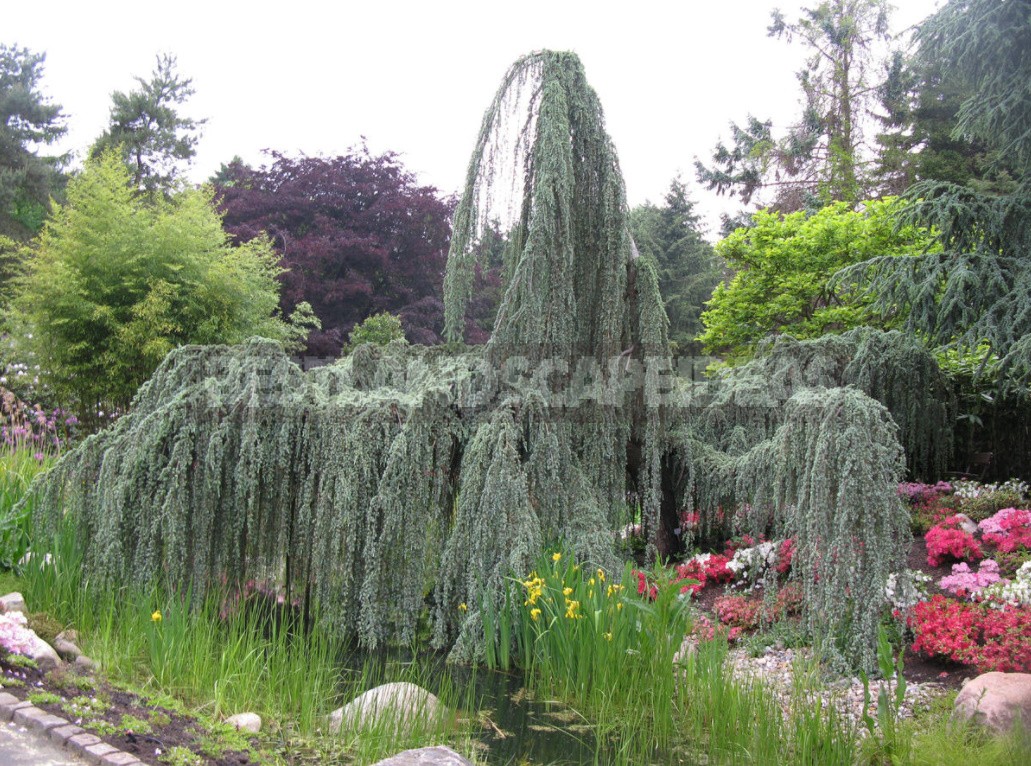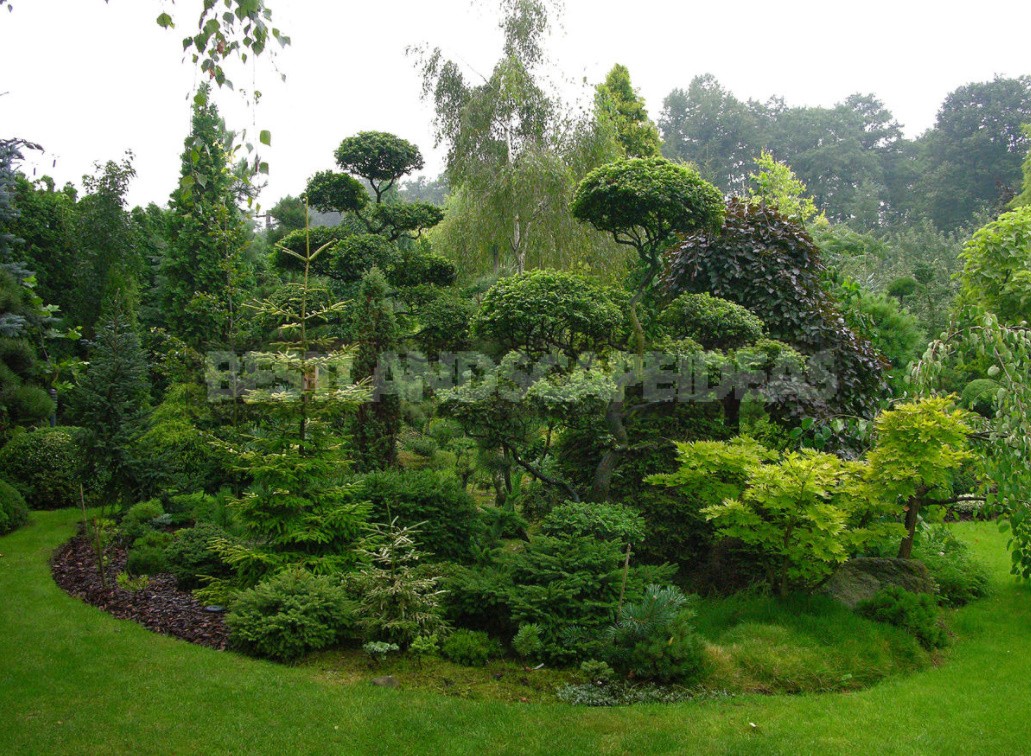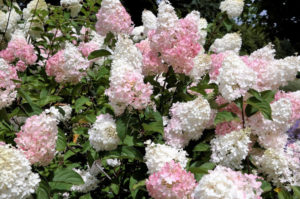
At the previous stage, we have analyzed where and what volumes of shrubs in the garden can take place. Let’s remind ourselves again how important this is. It is always more correct and logical to start with the structure, with the volumes, and then fill them in. Otherwise, you’ll have to run around the garden in a hurry, buying another plant, looking for a place to stick it, and then puzzle over how to beat it.
A few words about sizes and quantities
Which plants should I start filling the previously designed volume with? The answer is clear: from the largest. Try to take balls of different sizes and build a composition from them. The vast majority of people will take the big ball first, then the medium one, and then the small ones will be used, and so on. It is very difficult and illogical to act in reverse order.
In this case, the composition is extremely balanced if the number of elements themselves increases with a decrease in the level of significance of the structural element (in our example, with a decrease in the diameter of the ball). The same applies to plant compositions. After all, the laws of perception are the same and do not depend on whether we contemplate a sculptural composition, a vegetable or a table set. We will choose the main thing, and this main thing will be the only one in our field of vision. As soon as the second image appears in the same picture, even if not identical, but arguing with the first, the “main” (“main”) disappears altogether.

This becomes more clear to many when you draw a parallel with production. There is a General Director, under him — the heads of shops and foremen, and already under the latter, in fact, a larger workforce. It is clear that there should be only one General Manager. As soon as the second one appears, the structure (and composition) inevitably collapse and are preserved only if one of the General ones is slightly “more General” than the other. All the same applies to the size of plants and the degree of their decorativeness: the most significant ones should be few, but the “workers” are already a mass, and no one considers them, this is often a curtain of any plant species, perceived as a spot, and not as individual specimens.
Main and subordinates
If you have learned this, then go on to the direct selection of one plant to another. One “assigned” main thing motivates the choice of subordinates (for example, it is unlikely that the vertical can be subordinated to the “umbrella” or ball, rather only to the vertical, but larger). Selected subordinates are forced to select certain plants that are already subordinate to them (for example, light and openwork — above, dense and dark — below) — and so on, to the lowest level.

This is done according to the classical laws of building harmony, which we deliberately do not stop at. These are the laws of color, proportionality, contrast and nuanced compositions. These are the basics of landscape design, and a lot has already been said and written about them.
Understanding that some shrubs will become accents of previously designed volumes, and some-subordinate elements, we must not forget about neutral, background plants, the presence of which in a stylistically designed garden is inevitable. It is thanks to them that we can appreciate the accents. If the true “star” plants are located against the background of equally decorative and also claiming to be soloists, then the first lose their importance and become less attractive, and the picture as a whole turns out to be overloaded, tedious and unnatural. The eye in it has nothing to cling to, it is difficult to isolate one, but complete plot from all this riot.
The choice for the season
It is also necessary to take into account seasonal changes that occur with plants. In the words of many architects about the conditions for designing gardens, you can hear envious notes about the climate. Often it comes down to something like this monologue: “you have no idea what you have! You have everything pure white and graphic, then suddenly bright green, and then — fiery red and gold. You can create, in fact, several kindergartens on one small territory, which will replace each other throughout the year and will not be absolutely similar.”

I support this point of view with both hands! It’s a shame that we often just ignore such a priceless opportunity. For a week, after taking photos with the whole family against the background of blooming Spiraea × vanhouttei, surrounded by a rainbow of tulips and primroses, we then spend most of the season admiring how the uncovered Tulip leaves turn yellow (we have read that you can not dig, the outflow of nutrients, etc.). and Spiraea × vanhouttei is worth nothing (even autumn is not expected)…
And for some reason we like to arrange autumn in the summer, planting varietal “purple and gold” throughout the garden, and for this and the beauty of autumn is no longer noticing. And it adds fuel to the fire only as a wrecking signature in articles and books: “stable ornamental plant”; this mainly applies to conifers.

Is it good if the plant does not have its peak decorative effect? It’s like a formal suit that was worn daily, and then put on for a holiday — no one in your appearance will feel the solemnity of the moment. It’s the same with the plant. Give it the opportunity to open when it really can not be replaced by anything (the leaves have already fallen or have not yet bloomed, it is far from flowering — the color of the needles and its smell are pleasing). Don’t force yourself and your guests to contemplate it daily and artificially admire your garden. Let your delight be sincere when you go out into the garden every morning and see something new in it, and not an established picture that changes only its size.


